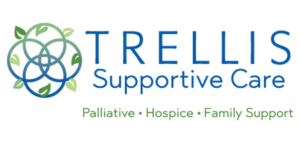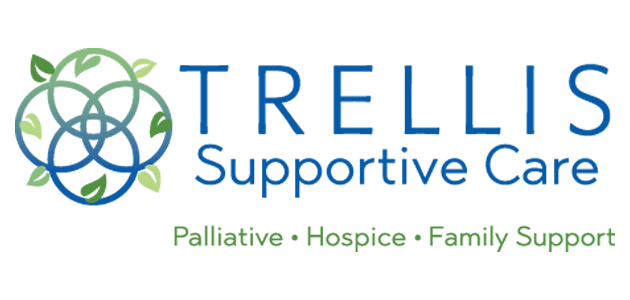Because We Care
Practical tips for family caregivers
December 2010/January 2011
The holidays are a time of many emotions. In our December issue we look at the holiday blues. As well, we wrap up our series on driving and offer tips for making a smooth transition from hospital to home.
Coping with the holiday blues
 Caring for a seriously ill family member can lend a tinge of blue to the holidays.
Caring for a seriously ill family member can lend a tinge of blue to the holidays.
It may be sadness that cherished family rituals are no longer possible. Or worry that this year will be the last for a sick or ailing loved one. Perhaps the thought of a family visit is overwhelming.
Here are some ways to handle these common stressors.
It doesn’t have to be “all or nothing.” Even if some family customs are no longer realistic, embrace what’s still possible. And let go of the guilt-laden “shoulds.”
- Keep it simple. Perhaps you still gather at Mom and Dad’s, but order a precooked, take-out meal. Or have everyone contribute to the meal. Try to capture the essence in a way that no one person shoulders a big burden.
- Focus on the most meaningful activities. Your energy and your loved one’s energy are limited! Pick one ritual that truly gives you that holiday lift and consider any others an “extra gift” of the season.
Acknowledge the “anticipatory grief.” You’re not crazy if pulling out your holiday sweater brings on a bout of tears.
- A holiday can sharpen awareness of life’s impermanence. You may feel grief about the losses you have already experienced. And grief as you realize your loved one may not be with you next year. These feelings are normal. If possible, share them with someone who understands.
- Celebrate your loved one’s presence. Trying to “make this holiday the best” may distract you from spending quality time with your relative. Instead, take the opportunity to cherish what you have now, and revel together in shared memories of holidays past.
Maintain your normal self-care routines. In this season of extra stress, it’s especially important to get enough sleep, eat sensibly, and exercise regularly.
If your “blues” aren’t lifting, learn more in our article about grief.Return to top
Alternatives to driving
Most older adults outlive their ability to drive safely by seven to ten years. This means they need to develop alternate ways of getting around. Here is a list to help you strategize:
- Friends and family. This is by far the most common.
- Public transportation. Consider riding the bus together to a fun event. Make the bus ride part of the adventure. See if there’s a “buddy program” for new riders. If your relative has disabilities, check out the company’s paratransit program. This allows for door-to-door service from your loved one’s home to their destination.
- Volunteer driver programs. Many churches and senior centers have volunteers who can be scheduled a few days in advance to take your relative from one place to another.
- Ride-sharing apps. Lyft and Uber are becoming very sensitive to the needs of older adults. They have special certifications for senior-friendly drivers. They are also exploring options that don’t require a smartphone. GoGoGrandparent.com offers a service that bridges between the app and your loved one on a regular phone. And senior-oriented phones, such as Lively, are also exploring programs to make ride sharing easier.
- Delivery services. The pandemic has resulted in many businesses adding online ordering with delivery to your door. This is a great way for your loved one to get the things they need without having to drive.
- Special service vans. Medical or cancer treatment centers often have a van service. Take a shuttle to the airport. Senior centers are putting together cultural outings for evening and faraway events. Board the van and leave the driving and parking to someone else!
Find out now what’s available. Check out ridesinsight.org or call 855-607-4337 (toll-free, nationwide) to find local driving alternatives.
Return to topMaking the transition from hospital to home
There’s a lot to do after bringing someone home from the hospital. The obvious goal is continued recovery. But roughly 20% of older adults are rehospitalized within 30 days because of problems that develop at home.
Research shows there are three things you can do to prevent a backslide. It’s important to get going on them even before your loved one is discharged.
- Understand the new medication schedule. Meet with the discharge planner to review medications. Bring a list of what your loved one was taking before hospitalization. If any of these drugs are not on the current list, ask if they should be restarted. Review each new medication. When should it be taken? How long should it be taken? Any side effects? Have new prescriptions phoned in to the pharmacy before you leave the hospital.
- See the doctor for follow-up within a week. Find out what doctor(s) your loved one should see. Request that the hospital forward records to all of them. Before you leave the hospital, call the doctor’s office to set up an appointment for the next week. You may need to be firm with the receptionist and explain that your loved one has just been hospitalized.
- Know the signs and symptoms of problems. Before leaving the hospital, consult with the discharge planner about what to expect. Ask them to group symptoms as “green light,” normal recovery. “Yellow light,” early signs of a possible problem. And “red light,” a significant problem. Find out what to do and who to call in case of yellow or red light symptoms.
Focusing on these three tasks can significantly speed recovery and reduce your family member’s chance of rehospitalization. If you are confused about any of these tasks, don’t be shy about asking questions. You want to be sure you understand what will be needed at home before you leave the hospital.
Return to top

